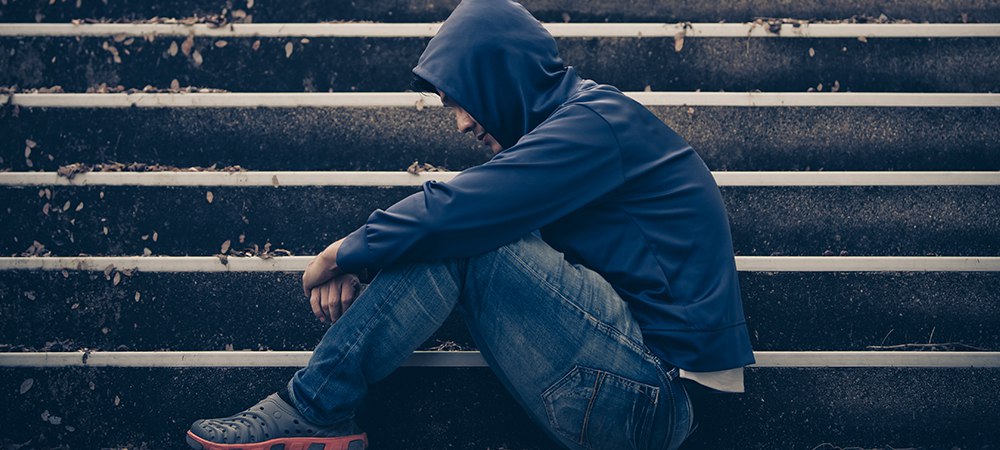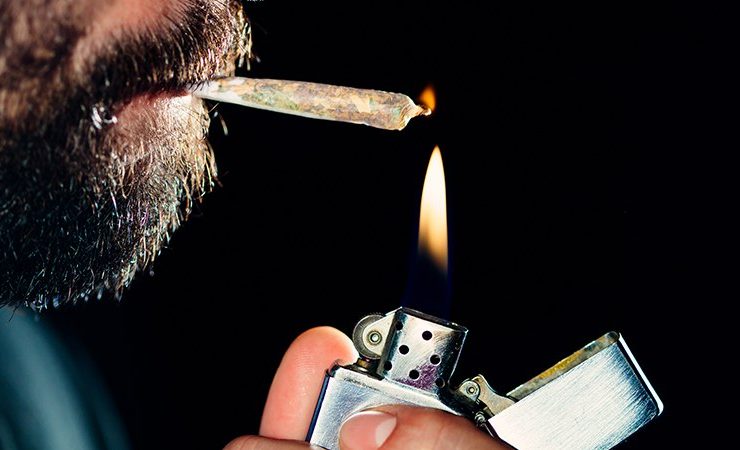What is Cannabis Use Disorder: Symptoms, Side Effects and Treatment
Also known as marijuana addiction, cannabis use disorder is rampant in places where its consumption is legal. For young people, marijuana addiction can deter them from achieving their dreams. Also, cannabis use disorder severely damages the teenage brain. It Interferes with their neurotransmitter and causes abnormal brain shape.
Although cannabis addiction withdrawal symptoms aren’t as severe as opioids, they are unpleasant. One primary symptom of Cannabis use disorder is insomnia. However, treating cannabis use disorder with medications can alleviate the symptoms. With inpatient and outpatient treatment options, patients can fully recover from marijuana addiction.
Thankfully, this article explores everything you need to know about cannabis use disorder. In this article, we discuss various symptoms of the disorder and the side effects of the addiction. Also, we explain treatment options patients can choose from to get rid of their addiction.
What is Cannabis Use Disorder?
CUD which stands for cannabis use disorder, is the same as being addicted to marijuana. Although doctors may prescribe marijuana in a bid to alleviate pain and nausea, it can be addictive. Recreational consumption of marijuana isn’t new as people consumed it in time past for its “high” effect. Recreational consumption of marijuana enhances the user’s senses and brings about a change in mood.
Furthermore, cannabis plants contain a compound known as a cannabinoid. Synthetic cannabis, which has more effect than natural cannabis, does more harm. Synthetic cannabinoids are designed to replicate natural cannabinoids and are more popular amongst addicts. Also, they are commonly referred to as K2 or spice by users.
In October 2018, Canada legalized the recreational use of cannabis, making it the second country globally. Two years after legalizing non-medicinal use of cannabis, a study showed that about 35.6% of adults (18-24 years) consumed cannabis. Also, the most common method of consuming cannabis in Canada is smoking. As of 2020, 52.5% of females and 63.6% of males consumed cannabis by smoking it.
The most widely abused substance in Canada is cannabis. Although vaping is considered less harmful than smoking, 41.4% of the study participants consumed edibles.
Consuming cannabis in your teens (age 15 and above) puts you more at risk of developing cannabis use disorder. Likewise, teens are more likely to develop mental disorders such as schizophrenia and psychosis. Also, the onset of withdrawal symptoms takes place 24hrs after last consumption. Typically, heavy users of cannabis experience more severe withdrawal symptoms.
Cannabis Use Disorder Symptoms
One way to recognize a person with cannabis use disorder is to be on the lookout for its symptoms. Cannabis use disorder can be mild if three symptoms are present or moderate, showing just five signs. However, Cannabis use disorder is seen as severe if more than six symptoms are present.
Eleven criteria show a person has cannabis use disorder. Such a person must exhibit a minimum of two symptoms set by the DSM-5. Likewise, these symptoms must occur in 12 months. Below are the 11 Signs of cannabis use disorder you can watch out for in you or your loved ones.
- You give up on or reduce recreational, social, and occupational activities due to cannabis use. It can also be known as social impairment
- You lose control when it comes to consuming cannabis. You use cannabis in more significant amounts than you intend to for an extended period
- You have a strong will to control or quit cannabis use, but your efforts are often unsuccessful
- Present psychological and physical issues get worse with the continuous use of cannabis
- You dedicate a lot of your time and resources to doing things that can get you marijuana
- Withdrawal symptoms set in when you cease consuming your regular amount of cannabis. In a bid to avoid or relieve those symptoms, you continue cannabis consumption
- Your body begins to get accustomed to specific cannabis amounts causing you to build tolerance. As a result, you end up needing more significant amounts to get the “high” effect
- Continuous use of cannabis results in failure to carry out significant responsibilities at home, school or work
- You continue using cannabis even when it begins to take a toll on your mental and physical health
- You disregard the negative impact of cannabis use on your interpersonal and social relationships
- You have an intense craving to use cannabis
Cannabis use disorder not only affects you but the people around you. When you begin to notice these symptoms, it’s essential you seek treatment. Cannabis addiction treatment is more effective in dealing with the disorder than willpower. Although your drive to quit is critical, quitting cold turkey can be dangerous to your health.
Side Effects of Cannabis Use Disorder
Cannabis intoxication takes place when a psychological or problematic behaviour change happens briefly after consumption. Usually, there is euphoria, impaired judgement, and motor coordination, anxiety, and social withdrawal.
Typically, the effects of cannabis intoxication can last for as long as four hours. People who ingest cannabis orally witness a more extended intoxication period than those who don’t. Additionally, the effects of cannabis ingestion can reoccur in the space of 24 hours. The recurrence is due to active metabolites’ slow release from fatty tissues.
Here are some side effects of cannabis use disorder.
It negatively impacts your mental health
Consuming cannabis can get you feeling afraid, anxious or cause you to panic. It increases your chances of getting depressed and can trigger underlying mental health disorders.
Additionally, when you consume cannabis in high doses, you can lose your connection with reality. Seeing things that aren’t there is referred to as hallucination and can get you paranoid.
It gives a temporary high feeling
Getting high is one of the significant reasons people smoke weed, otherwise known as cannabis. Cannabis has a psychoactive ingredient known as Tetrahydrocannabinol. THC stimulates sex, pleasure and food receptors in your brain. After consuming cannabis, dopamine is released, giving you a relaxed and euphoric (high) feeling.
Furthermore, people who smoke or vape weed get high in minutes or even seconds. The reason is that THC enters into the bloodstream faster via smoking. So, in less than 30 minutes, the level of THC in your bloodstream peaks. However, in about one to three hours, the high feeling passes, leaving you craving for more.
On the other hand, people who eat or drink cannabis can take several hours before sobering up. Typically, when the bloodstream absorbs THC through your digestive tract, it undergoes metabolic pass in your liver. After this, the THC enters general circulation, which is a slow process.
Because the absorption process is slower compared to smoking, the THC effects are gradual. It may take about an hour before it gets to the brain. However, the high feeling will last longer, unlike when you smoke cannabis.
It increases the risk of heart failure.
Another side effect of cannabis is that it causes your heart to do more work. Usually, the human heart can beat up to 70 times per minute. However, consumption of cannabis can cause it to escalate to over 120 beats per minute.
Additionally, other chemicals you include when consuming cannabis increase your chance of stroke. As a result, senior citizens and those with heart diseases are more at risk when they smoke cannabis.
Other side effects of cannabis use disorder include:
- Respiratory illnesses
- Increased hunger
- High risk of having underweight babies (for pregnant marijuana smokers)
- Increased consumption of cannabis can cause a type of testicular cancer
- Short and long-term brain impairment
Related Article: 10 Tips to Get Rid of Marijuana Addiction
Cannabis Use Disorder Treatment
Like other addictive substances, cannabis use disorder patients suffer from psychiatric disorders. Also, it’s common to find patients who have a history of other substance abuse issues. Because mental health is often affected by cannabis use disorder, treatment is incomplete without cognitive behavioural therapy.
Additionally, patients have the option of choosing an inpatient facility or outpatient treatment. However, because detoxing alone can be dangerous, it’s advisable that patients check into a medical detox centre. Here are the various ways of treating cannabis use disorder.
Assessment
Getting assessed by a medical professional is the first step in treating cannabis use disorder. Typically, doctors carry out a detailed psychiatric assessment on patients. The assessment often includes gathering information on the patient from their relatives and friends. Also, doctors can request further medical information from previous healthcare providers and colleagues.
Furthermore, the doctor primarily assesses the substance use pattern. This includes the use of cannabis alongside other addictive substances. Also, the doctor considers things that the patient sees as problematic and valuable about their patterns.
To thoroughly manage a marijuana addiction case, doctors recommend an inpatient or outpatient treatment. Often, they recommend outpatient treatment for patients with moderate cannabis use disorder. However, some patients’ recovery process is threatened if they stay in a familiar environment.
Cognitive-behavioural therapy
Cognitive behavioural therapy which is also known as CBT, is a type of psychotherapy. It trains patients on ways to identify their problematic behaviour firstly. Then, after successfully identifying inappropriate behaviours, CBT helps patients to correct those behaviours.
In the long run, cognitive behavioural therapy helps patients with Cannabis use disorder to stop substance abuse. Also, it helps them improve their self-control and addresses other co-occurring problems associated with the disorder.
Motivational enhancement therapy
Motivational enhancement therapy is an intervention strategy that’s aimed at producing the change from within. The intent is to stir up healthier habits in the patient rapidly. Also, rather than treat the patient, MET awakens their internal resources to stimulate change.
Contingency management
This is a therapeutic approach to managing cannabis use disorder. It is based on frequently monitoring the behaviour of the patient. Also, the contingency management approach aims at positively rewarding good behaviours.
Medications to Treat Cannabis Use Disorder
One way to treat cannabis use disorder is the use of medications. Agonist and antagonist approaches involve using different drugs to suppress cravings. Also, these approaches are efficient in treating other substance use disorders like opiate and nicotine and dependence.
Agonist approach
The agonist approach is an efficient method of treating long-term cannabis addiction. It involves the use of a cross tolerant drug or similar agonist drug to alleviate withdrawal symptoms.
Additionally, the use of agonist approach is successful for treating methadone and buprenorphine addiction. The agonist approach is still undergoing study regarding using THC to treat cannabis use disorder. However, THC isn’t harmful in itself as it’s legally used in countries as a medication for chemotherapy side effects.
Furthermore, according to a study, oral synthetic THC used in outpatient clinics for CUD gave promising results. However, the government is yet to approve any pharmacological treatment used in treating cannabis use disorder.
Antagonist approach
This approach makes use of CB1 in a bid to stop patients from experiencing the pleasure accompanied by smoking weed. By this, we mean that the approach inhibits specific receptors in the patients’ brains. The result of the use of CB1 antagonists is that patients no longer seek or want to use cannabis.
Furthermore, the antagonist approach uses the mOR antagonist naltrexone to treat opiate use disorder. There have been other studies to prove the use of mOR antagonist naltrexone in treating cannabis use disorder. However, the experiments aren’t entirely consistent.
Related Article: Addiction Treatment During COVID-19
To Sum It Up
Cannabis use disorder can take a toll on the physical and mental health of both patients and their loved ones. Severe depression sets in, hallucination and anxiety, which can make life unbearable. To beat cannabis addiction, patients need to muster all the courage they have and seek medical help.
Seeking medical help if you’re suffering from cannabis use disorder doesn’t mean you’re weak. Seeking medical help is acknowledging that you can’t do it on your own. One cannabis use disorder symptom is unsuccessful attempts to quit cannabis use. Patients are bound to relapse with no external help and medical assistance.
Don’t let cannabis use disorder knock life out of you. With the best treatment, you can go back to achieving your dreams. Inspire Change Wellness Centre offers patients quality addiction treatment services. Check out our addiction treatment services for you or your loved one.




